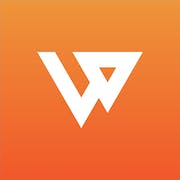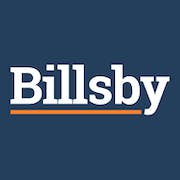Looking for the best billing and invoicing software? Our comprehensive buyer's guide has everything you need to make an informed decision. Find the perfect solution for your business.
Managing your finances as a business owner can be a daunting task, juggling different accounts, ensuring you stay up-to-date with new taxation laws, chasing late payments, and more. The guessing game of billable hours can leave you stressed, and it can be an obstacle to productivity and growth. That's where billing and invoicing software comes in to save the day. By automating repetitive tasks and streamlining invoicing processes, this solution can enable business owners to direct their focus to higher-level tasks. Whether you're a freelancer, small business, or agency, this guide aims to help you choose the best application.
What is billing and invoicing software?
Billing and invoicing are critical components of any business that wants to get paid for the products or services it provides. Technology can make it much easier for companies to manage the billing and invoicing process by automating many of the key tasks. Simply put, a billing and invoicing tool is a type of program designed to help businesses automate their billing and invoicing processes.
This application can help businesses in a variety of ways which include:
- It can automate the billing and invoicing process, reducing the amount of time and effort required to create and send out invoices.
- It can help businesses to keep track of all their billing and invoicing records in one place, providing an easy way to review and reconcile past invoices.
- Some billing and invoicing solutions include features like payment processing or time tracking, which can help businesses to manage their finances more effectively.
This technology is used by a wide variety of companies, from small startups to large multinational corporations. Some common types of businesses that utilize it include:
- Freelancers and independent contractors who need to bill clients for their work
- Small businesses that need to manage their finances more effectively
- Mid-size and large companies that want to streamline their billing and invoicing processes
- Service-based businesses that need to charge clients for their time or expertise
What benefits does a billing and invoicing solution come with?
This billing software has become an essential tool that businesses need to consider incorporating into their operations. Here are its main benefits:
- Increased efficiency: It automates the billing process, reducing the amount of time and effort required to generate invoices. Manual invoicing can be time-consuming and prone to errors, but with software, businesses can easily generate and send out accurate invoices in seconds.
- Improved cash flow: Invoicing technology can help to improve cash flow by ensuring prompt invoicing and payment collection. This leads to increased revenue and better financial management. The system also helps businesses track payments and send reminders to customers, reducing the likelihood of unpaid bills.
- Enhanced client relationships: Automation features for invoicing and payment collection enable businesses to minimize billing errors and inaccurate statements that can otherwise damage client relationships. This leads to increased customer satisfaction and loyalty.
- Better data management: It can streamline data management by creating detailed financial reports and automating the recording of transactions. This improves visibility into financial transactions and enhances the accuracy of bookkeeping records.
- Increased productivity: The software allows businesses to focus on their core functions, freeing up valuable time and resources usually devoted to manual billing. As a result, productivity increases and employees can concentrate on other key areas of the business.
10 key features of billing and invoicing software
Below are the top 10 common features of billing and invoicing platforms:
1. Customizable invoices
It allows users to customize their invoices to include their brand logo, company information, and other specific details. This gives businesses a professional look that enhances their brand identity.
2. Payment gateways
Integration with multiple payment gateways is a vital feature of invoicing software. Merchants can receive payments from different sources, including credit and debit cards and bank transfers.
3. Automated recurring billing
Users can set up recurring invoices and automate the billing process. This is particularly helpful for businesses that provide services with monthly or weekly subscriptions. The app automatically sends invoices to customers and payment reminders.
4. Multi-currency support
International businesses need a feature that supports multiple currencies. This feature aids in the smooth process of billing and payment in different national currencies.
5. Real-time reporting
An invoicing tool generates real-time reports on expenses, income, and other financial information that helps businesses track their finances and generate insights into their financial performance.
6. Inventory management
Integration with inventory management solutions helps to streamline billing and payments for products-based businesses. The package takes care of stock levels and sends prompt notifications when products are out-of-stock.
7. Client portal
Billing and invoicing software solutions may include a secure portal for clients. This advanced feature enables clients to log in and view their invoices, update payment information, and view account information and payment histories.
8. Automatic tax calculations
Accurate tax calculations are paramount in any solution as it takes care of calculating the taxes for the user's business, including state and local sales tax calculations.
9. Mobile app integration
Mobile invoicing technology allows small business owners and freelancers to create and send professional invoices from their smartphones. This additional feature enables users to send invoices to clients on-the-go and receive payments in just a few taps.
10. Time tracking
Time tracking is a significant feature for businesses that charge by the hour. A billing and invoicing app tracks time spent on a particular task and generates an invoice based on the time-tracking data.
Things to consider when adopting a billing and invoicing solution
There are countless options when it comes to the selection of billing and invoicing software. While this is undoubtedly a good thing, it can also be overwhelming, especially for small businesses that may not have dedicated IT staff to assist them. Therefore, it is crucial that any business looking to invest in such a tool takes the time to thoroughly evaluate their needs in order to ensure they choose the right product.
One of the most important factors to consider is the program's scalability. As a business grows, so too should its billing and invoicing system. Therefore, it is important to choose a product that can easily accommodate increased numbers of clients and transactions. Additionally, the one you select should also be flexible enough to adapt to changes in business processes and requirements.
Another key consideration is itsintegration capability. For many businesses, this application will need to integrate with other systems, such as accounting tools, customer relationship management (CRM) apps, and payment gateways. Therefore, it is important that the chosen solution can easily interface with these types of systems.
Usability is also an essential factor. The application should be user-friendly and intuitive, with a clear and navigable interface. It should be easy for team members to learn how to use it without training, and it should take minimal time to create and send invoices. In addition, it should also have useful features such as the ability to set up recurring invoices, automated payment reminders, and support for multiple payment methods.
A further factor to consider is data security. Businesses handle sensitive customer information such as names, addresses, and payment details, and as such, it is crucial to choose a software provider that takes data security seriously. The platform should have strong security measures in place to protect this data from security breaches or data loss.
Lastly, cost is also an important consideration. While it is essential that businesses carefully consider the total cost of ownership, it is also important to keep in mind that investing in the right package can bring significant long-term cost savings. A study by IDC found that businesses that adopted digital invoicing experienced a 29% reduction in costs over manual invoicing. Therefore, companies should carefully assess their budget, evaluate the pricing models offered by different vendors, and choose a product that can offer a reasonable return on investment.
Emerging market trends for billing and invoicing software
To say that "billing and invoicing" is a crucial aspect of business operations is an understatement. So, it's no surprise that this space continues to evolve, bringing with it new ways to streamline the process and improve user experience. As we venture into 2024, the quest for the best billing software has never been more crucial. A recent research by Research.com has shown that among 260 CFOs surveyed, 48% plan to invest in technology to streamline finance tasks. Here are some of the latest trends we expect to see throughout 2024 and beyond:
1. Automation and AI implementation will continue to rise. With a wide range of repetitive low-level tasks involved in billing and invoicing, automating workflows will undoubtedly be prioritized. This will allow businesses to focus on more high-value work and strategic planning.
2. Enhanced security features will become more essential. Cyberattacks are a major concern for modern businesses, and especially for those that handle sensitive financial data. Therefore, billing and invoicing software vendors will need to step up their data protection features to ensure the safety of their users' information.
3. Improved integration capabilities will be a critical differentiator. The ability to integrate with other business applications, such as accounting software and CRMs, will become a key factor in choosing a billing and invoicing solution. As businesses strive for smoother workflows, the ability to quickly and easily share data will become an essential feature.
4. User experience will continue to be a major focal point. The more intuitive and easy-to-use a billing and invoicing program is, the more likely it will be adopted and widely used. Therefore, vendors will be investing heavily in developing intuitive interfaces that improve user experience and streamline the billing and invoicing process.
5. Mobile functionality will become more prevalent. With remote work and flexible hours on the rise, the ability to access billing and invoicing applications on mobile devices will become increasingly important. More vendors are expected to optimize their solutions for mobile devices to cater to these shifting work trends.
As technology continues to evolve at breakneck speed, we are likely to see even more developments and innovations in billing and invoicing technology in the coming years. However, it is safe to say that the trends we outlined above will have a significant impact on the industry and its users for years to come.
Conclusion
In conclusion, companies must remember that the best billing and invoicing software is one that aligns with their specific requirements and helps them achieve business goals efficiently. Take the time to research, demo, and compare different options before making your final decision. With the right tool, you can transform your billing process into a streamlined and effective component of your business strategy as itoffers a fast and convenient way to manage finances, provides multiple payment options, and ultimately saves time and reduces expenses.








